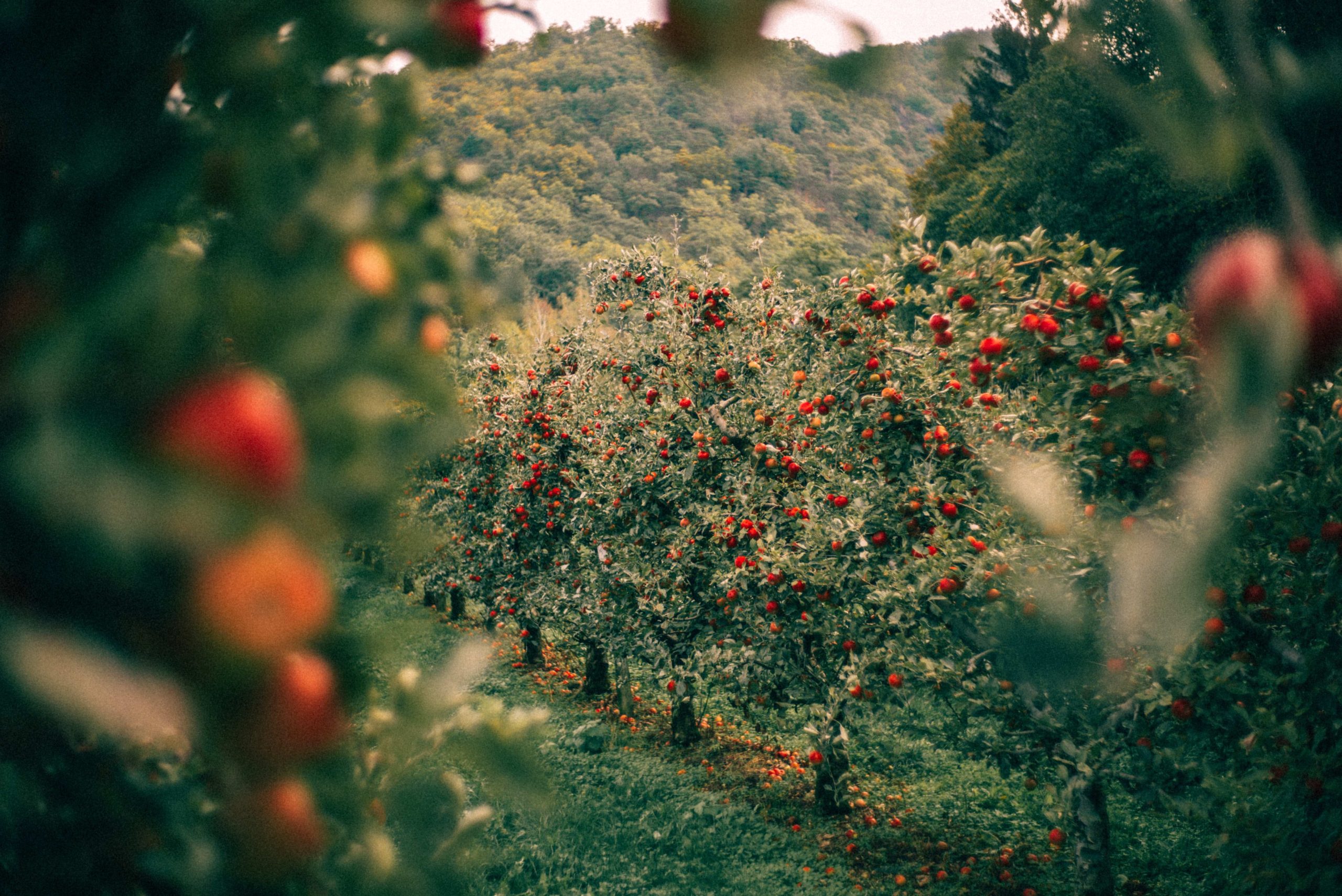After apple scab, powdery mildew caused by Podosphaera leucotricha is the most common apple disease. It also damages pears, quinces, and medlars. The disease is favored by mild winters, dry and warm spring weather, heavy fertilization, susceptible varieties, and modern cultivation methods. It is harder to control than apple scab because it tends to occur more in warmer, less rainy years, and in sunnier, less humid, and warmer locations, which are conditions dictated by the fungus’s different requirements for air humidity and precipitation.
Disease attack
Green parts of the fruit tree (buds, flowers, leaves, young shoots), occasionally fruits.


Disease pathogen
The fungus Podosphaera leucotricha
Symptoms of the disease
The perennial presence of powdery mildew in an orchard is evident on trees with so-called “sparse crowns,” characterized by young shoots covered with a characteristic powdery, white-grayish coating. This coating develops on all green organs, causing the fungus to cover plant parts that assimilate less effectively. Moreover, the fungus worsens leaf development by extracting nutrients from the plant’s epidermal cells through its haustoria. Symptoms on leaves appear immediately after leafing out. Infected leaves are narrower, tougher, deformed, upright, and curled like funnels. They gradually dry up and fall off, except for the top leaves which turn metallic and dry out but remain at the shoot tip. As a result, the tree exhibits a characteristic appearance with numerous bare or semi-bare shoots and several dry or semi-dry leaves at the top, while the tree canopy becomes sparse. Young shoots grow less vigorously with shorter internodes.
Flowers that develop from infected floral buds are greenish in color, with their petals appearing ashy. The petals of these flowers exhibit stunted growth, remaining very small and lacking the normal pink color, appearing instead greenish-watery. They are narrow and small, with prominent stamens and pistils. These flowers are sterile and cannot develop into fruits. Typically, all flowers within a single cluster that develop from infected floral buds are regularly affected. Even the green shoots of the current year can be infected with powdery mildew, often drying out eventually.
Secondary infections occur on fruits during their development or when the fruits are still small. An example is the Jonathan variety, which is more susceptible to powdery mildew. On the fruits of this variety, a condition known as “net necrosis” occurs, which reduces the fruit quality.
Disease biology
There are two possible ways of overwintering the fungus.
The first way is for the mycelium to overwinter in dormant leaf or flower buds, especially in the terminal ones. If temperatures drop below -20 °C, the mycelium can survive, but the bud cannot, so the fungus, being an obligate parasite, cannot further develop. Therefore, it is common to observe severe powdery mildew attacks after mild winters. Before they close, buds are infected by the fungus growing over the leaf stalk to the bud, and hyphae enter the bud while it is still open. Hyphae enter between the buds of future leaves and hibernate there. In spring, when the bud starts to grow, the fungus development and infection begin. This method of overwintering explains why the fungus appears more strongly after apple leafing and why all leaves or flowers of a shoot are affected.
The second way is for the fungus to overwinter in cleistothecia (perithecia). In autumn, on the bark of infected shoots or on infected leaves, brownish spherical bodies called cleistothecia develop. They overwinter on the bark of shoots and on fallen leaves, and in spring, they burst open. Inside them are asci containing 8 ascospores, which are released and carried by the wind to young leaves, where they germinate and cause infection. Initially, the infection is local, unlike the bud infection where all leaves are affected. It gradually spreads. The whitish-grayish coating consists of mycelium, conidiophores, and powdery mildew conidia. Conidiophores produce abundant conidia, especially on sunny and warm days with sufficient humidity in the air. These conidia lead to secondary infections and spread by wind. For conidia to germinate, water on the plant organ is not required; rather, a specific level of humidity in the air (80-90%) is sufficient.
Therefore, apple powdery mildew caused by Podosphaera leucotricha develops even in less humid weather, which distinguishes it from apple scab that thrives in rainy conditions. Infection spreads via conidia throughout the growing season, affecting primarily young leaves constantly developing at the shoot tips. By the end of the growing season, the spread of the fungus via conidia stops, and cleistothecia are formed, entering the buds for overwintering.


Conditions necessary for infection to occur
The optimal temperatures for infection are between 10 to 20 °C. The incubation period is 6 to 7 days at 22 °C, and 9 to 10 days at 12 °C. Strong wind and intense sunlight halt the infection, as do temperatures above 33 °C. Conidia contain sufficient reserves of their own water, so infection and germination do not require the presence of water, unlike other diseases.
Apple Powdery Mildew – Podosphaera leucotricha – Protection
It should be noted that varieties such as Idared, Jonathan, and Granny Smith are among the more susceptible varieties to powdery mildew.
Some of the fungicides used in the prevention, curative, and vapor action against powdery mildew include: Sulfur-based preparations (Kumulus, Kossan, Chromosul, Sumpor SC 80, Sulfolac): They act both as contact and vapor fungicides. Triazoles (Baycor, Score, Punch, Clarinet, Anvil, Meteor, Sabithane, Systhane, Topas, Folicur, Bayleton, Cros, Rotondo): Often used in combination with other products for effective control. Pyrimidines (Rubigan, Nimrod): Effective against powdery mildew. Strobilurins (Stroby, Zato): They prevent powdery mildew with a unique mode of action. Anilinopyridines (Chorus, Clarinet): Systemic fungicides with a novel mode of action against both powdery mildew and scab, used preventively and curatively. Dinocap (Karathane): A contact fungicide effective against powdery mildew. Triforine (Saprol N): A systemic fungicide used to control both powdery mildew and scab. These fungicides vary in their application methods and modes of action, offering options for comprehensive management of powdery mildew in orchards.













































